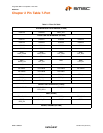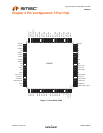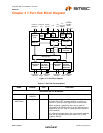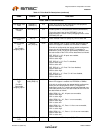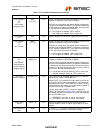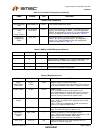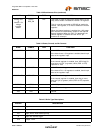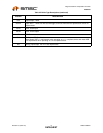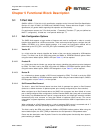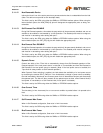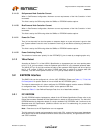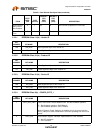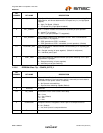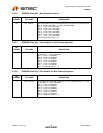
Integrated USB 2.0 Compatible 7-Port Hub
Datasheet
SMSC USB2507 15 Revision 2.3 (08-27-07)
DATASHEET
Chapter 5 Functional Block Description
5.1 7-Port Hub
SMSC’s USB 2.0 7-Port Hub is fully specification compliant to the Universal Serial Bus Specification
Revision 2.0 April 27,2000 (12/7/2000 and 5/28/2002 Errata). Please reference Chapter 11 (Hub
Specification) for general details regarding Hub operation and functionality.
For performance reasons, the 7-Port Hub provides 1 Transaction Translator (TT) per port (defined as
Multi-TT configuration), divided into 4 non-periodic buffers per TT.
5.1.1 Hub Configuration Options
The SMSC Hub supports a large number of features and must be configured in order to correctly
function when attached to a USB host controller. There are three principal ways to configure the hub:
SMBus, EEPROM, or by internal default settings. In all cases, the configuration method will be
determined by the CFG_SEL1 and CFG_SEL0 pins immediately after RESET_N negation.
5.1.1.1 Vendor ID
Is a 16-bit value that uniquely identifies the Vendor of the user device (assigned by USB-Interface
Forum). This field is set by the OEM using either the SMBus or EEPROM interface options. When
using the internal default option, SMSC’s VID (see Table 5.1) will be reported.
5.1.1.2 Product ID
Is a 16-bit value that the Vendor can assign that uniquely identifies this particular product (assigned
by OEM). This field is set by the OEM using either the SMBus or EEPROM interface options. When
using the internal default option, SMSC’s PID designation of (see Table 5.1) will be reported.
5.1.1.3 Device ID
Is a 16-bit device release number in BCD format (assigned by OEM). This field is set by the OEM
using either the SMBus or EEPROM interface options. When using the internal default option, SMSC’s
DID designation of (see Table 5.1) will be reported.
5.1.1.4 Self-Powered/Bus-Powered
The Hub is either Self-Powered (draws less than 2mA of upstream bus power) or Bus-Powered
(limited to a 100mA maximum of upstream power prior to being configured by the host controller).
When configured as a Bus-Powered device, the SMSC Hub consumes less than 100mA of current
prior to being configured. After configuration, the Bus-Powered SMSC Hub (along with all associated
hub circuitry, any embedded devices if part of a compound device, and 100mA per externally available
downstream port) must consume no more than 500mA of upstream VBUS current. The current
consumption is system dependent, and the OEM must ensure that the USB 2.0 specifications are not
violated.
When configured as a Self-Powered device, <1mA of upstream VBUS current is consumed and all 7
ports are available, with each port being capable of sourcing 500mA of current.
This field is set by the OEM using either the SMBus or EEPROM interface options. When using the
internal default option, the SELF_PWR pin determines the Self-powered or Bus-powered status.
Please see the description under Dynamic Power for the self/bus power functionality when dynamic
power switching is enabled.



